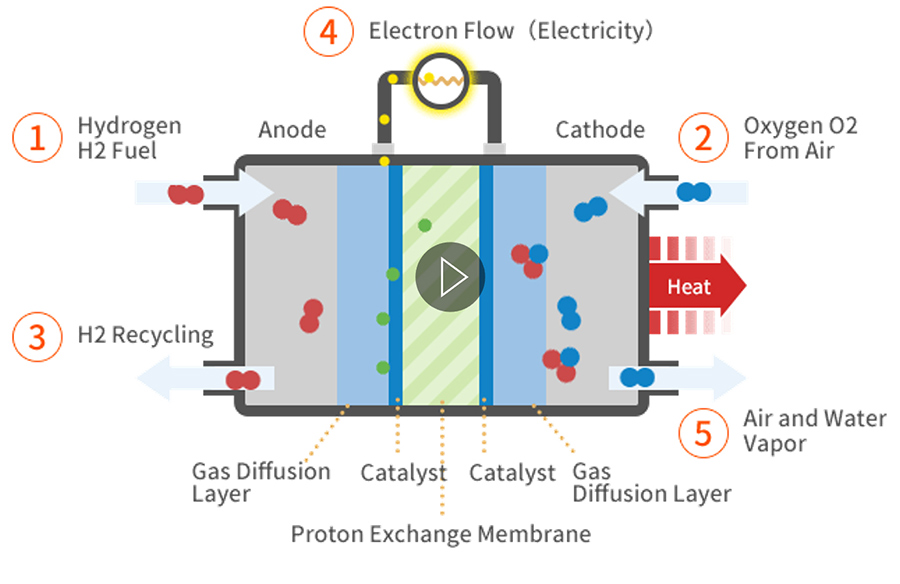The differences between a fuel cell and a regular battery:
A battery is a product that stores electrical current. Charging a dead battery involves a significant time interruption.
A fuel cell is a product that generates electrical current. It works as long as there is fuel.
The fuel cell’s fuel is hydrogen and oxygen. The refueling time in relation to the operating time is negligible. The hydrogen is usually supplied in gas bottles, while the oxygen is drawn from the surrounding air.
Continuous operation of the fuel cell is ensured by several subsystems working in productive harmony.

The image shows the physical principles of a fuel cell.
The differences between the Lamina® technology and traditional stacked fuel cells:
Please scroll table below to the left to see all content.
| FCT FUEL CELL SYSTEM | Versus | CONVENTIONAL FUEL CELL STACK |
|---|---|---|
| Active or passive air feed | versus | Active feed only, large support systems required |
| Applicable in a wide range of solution, from 10W – 3,000W | versus | Aimed at large applications (>3,000W) |
| Open end solution, operates at ambient pressure | versus | Close end solution, operates at very high pressure |
| Flexible in shape and form | versus | Monolithic, cannot be designed to available space |
| Thin, modular, scalable | versus | Rigid systems, not easily configurable |
| Does not use bipolar plates; cheaper to manufacture | versus | Significant production costs |
